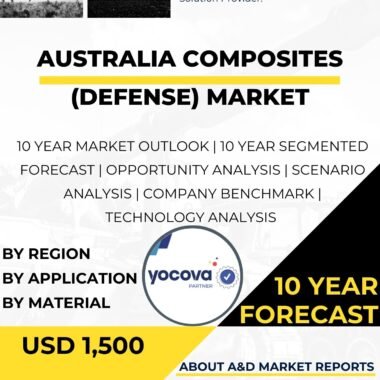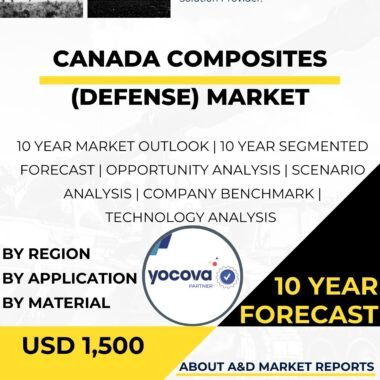Description
The South Korea composites market for defense applications is a critical and rapidly evolving segment within the nation’s defense industry. Composites are advanced materials made by combining two or more constituent materials to create a stronger, lighter, and more durable material than their individual components. This article provides an in-depth analysis of the current state, growth drivers, challenges, key players, and future prospects of the South Korea composites market for defense.
The historical context of the South Korea composites market in defense can be traced back to the nation’s efforts to modernize its armed forces. As South Korea sought to enhance its defense capabilities and reduce the weight of military equipment, the adoption and development of advanced composites became essential in the defense industry.
In the current landscape, the South Korea composites market for defense has witnessed significant growth and diversification. It encompasses a wide range of composite materials, including carbon fiber composites, glass fiber composites, and aramid fiber composites, used in various defense applications.
One of the primary growth drivers for the South Korea composites market in defense is the country’s focus on developing lightweight and high-strength materials. As defense technologies advance and military missions become more complex, the need for lightweight materials that can withstand harsh environments is paramount.
Moreover, composites offer significant advantages over traditional materials such as steel and aluminum. They possess high strength-to-weight ratios, corrosion resistance, and reduced maintenance requirements, making them ideal for various defense applications.
Furthermore, the South Korea composites market benefits from the nation’s focus on indigenization and developing homegrown defense technologies. The government’s commitment to fostering domestic defense capabilities has led to increased investments in research and development, driving innovation in composites technology.
Additionally, strategic collaborations with international defense suppliers have been instrumental in accessing advanced composites technologies and expertise. Partnering with established global companies allows for technology transfer and enables South Korea to leverage best practices in composites development.
The South Korea composites market for defense also derives growth from exports to international markets. South Korean companies have gained recognition for producing reliable and high-quality composites, attracting demand from various countries worldwide.
However, the market also faces several challenges. One of the primary challenges is the constant need for innovation and technological advancement. As defense requirements evolve and missions become more complex, developing composites with enhanced capabilities, such as improved ballistic resistance or electromagnetic shielding, requires continuous research and development efforts.
Moreover, competing in the global composites market can be challenging due to the presence of established international suppliers. To maintain competitiveness, South Korean manufacturers must focus on specialization and niche applications, providing unique composites solutions tailored to specific customer needs.
Additionally, composites manufacturing can be resource and energy-intensive, leading to concerns about their environmental impact. Implementing sustainable practices and reducing the carbon footprint in the composites industry are crucial considerations for future growth.
To address these challenges and ensure sustained growth, South Korea’s defense industry must prioritize research and development. Investing in advanced engineering capabilities will enable the country to develop cutting-edge composites, maintaining a competitive edge in the global market.
Furthermore, fostering strategic collaborations with international partners can enhance technological capabilities and provide access to broader markets for South Korean composites. Collaborating with allied nations fosters knowledge exchange and strengthens mutual defense capabilities.
The South Korean government’s continued support for the defense industry is crucial for promoting growth in the composites market. Financial backing for research and development initiatives, as well as procurement programs, will drive innovation and ensure the development of state-of-the-art composites technologies.
Moreover, promoting a skilled workforce and providing training and education in composites technology will enhance the local talent pool and create a sustainable ecosystem for the South Korea market.
In conclusion, the South Korea composites market for defense is a critical and rapidly evolving segment within the nation’s defense industry. Driven by the country’s focus on developing lightweight and high-strength materials, indigenizing defense technologies, and expanding export opportunities, the market continues to grow steadily. However, challenges related to innovation, global competition, and sustainability require proactive measures from the government and the defense industry to ensure sustained growth and competitiveness in the global market. By investing in research and development, fostering strategic collaborations, and promoting a skilled workforce, South Korea can strengthen its position as a key player in the global composites market for defense and enhance its overall defense capabilities.




